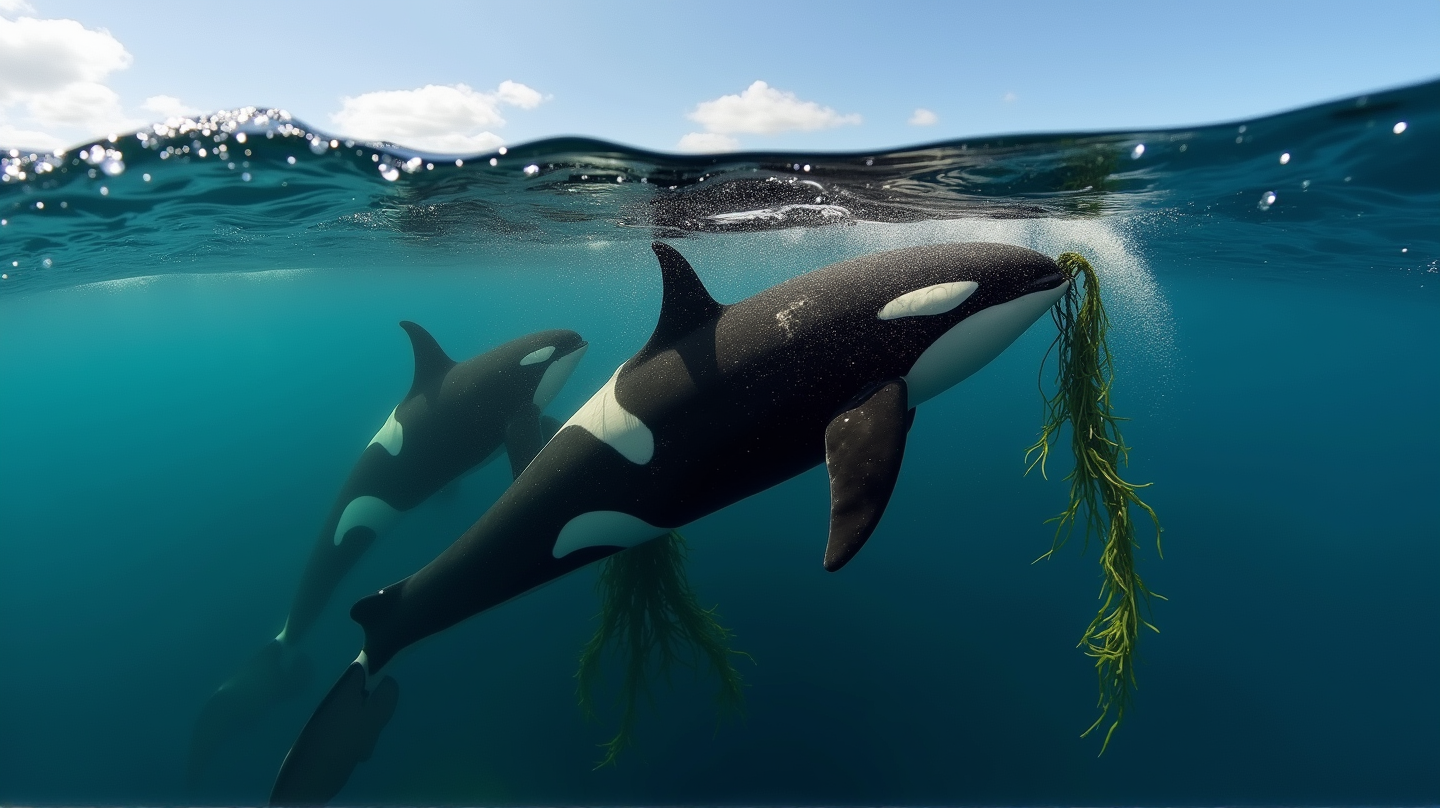Introduction to a Landmark Discovery
In an unprecedented marine biology revelation, Southern resident killer whales have been observed using seaweed as grooming tools in the Salish Sea, challenging previous notions of marine mammal intelligence. This intriguing behavior—caught on drone footage—not only highlights the remarkable adaptability of these majestic creatures but also unveils their complex social dynamics.
Unveiling the Secret Lives of Killer Whales
Historically, tool use was a behavior attributed mainly to land animals like primates and birds. However, killer whales in the Pacific Northwest have now entered this fascinating realm. Researchers, primarily from the Center for Whale Research, uncovered that these whales deliberately manufacture grooming tools from kelp, marking a distinctive behavior in marine life. As stated in ScienceDaily, high-resolution footage reveals the whales’ adeptness in breaking bull kelp stalks and skillfully rolling them against their partners during social rituals.
The Complexity Beneath the Waves
This new understanding suggests a level of social and cultural sophistication among killer whales that marine biologists had not previously explored. Michael Weiss of the Center for Whale Research expressed the significance of witnessing such tool-making behaviors that were not only consistent across various social groups but also demonstrated familial and age-related preferences in grooming partnerships.
Implications for Marine Biology Research
Although this specific grooming activity’s prevalence in other whale populations remains unknown, its discovery redefines the potential for tool use in aquatic environments. It underscores the importance of continuous, innovative observational techniques, such as drone surveillance, to expand our knowledge of marine mammal behavior and its implications for conservation efforts.
The Call to Action
Given the Southern resident killer whales’ critically endangered status, with fewer than 80 individuals remaining, discoveries like this emphasize the importance of advancing conservation strategies tailored to preserve these genetically unique populations. Protecting their habitat is crucial to maintaining biodiversity and further exploring their social intricacies.
Conclusion
The study of killer whales using seaweed for social grooming is a testament to the vast, untapped complexities of the natural world. Researchers remain committed to uncovering the mystery of these oceanic giants, echoing the sentiment that every day offers a new opportunity for discovery in the intricate web of life beneath the sea.
